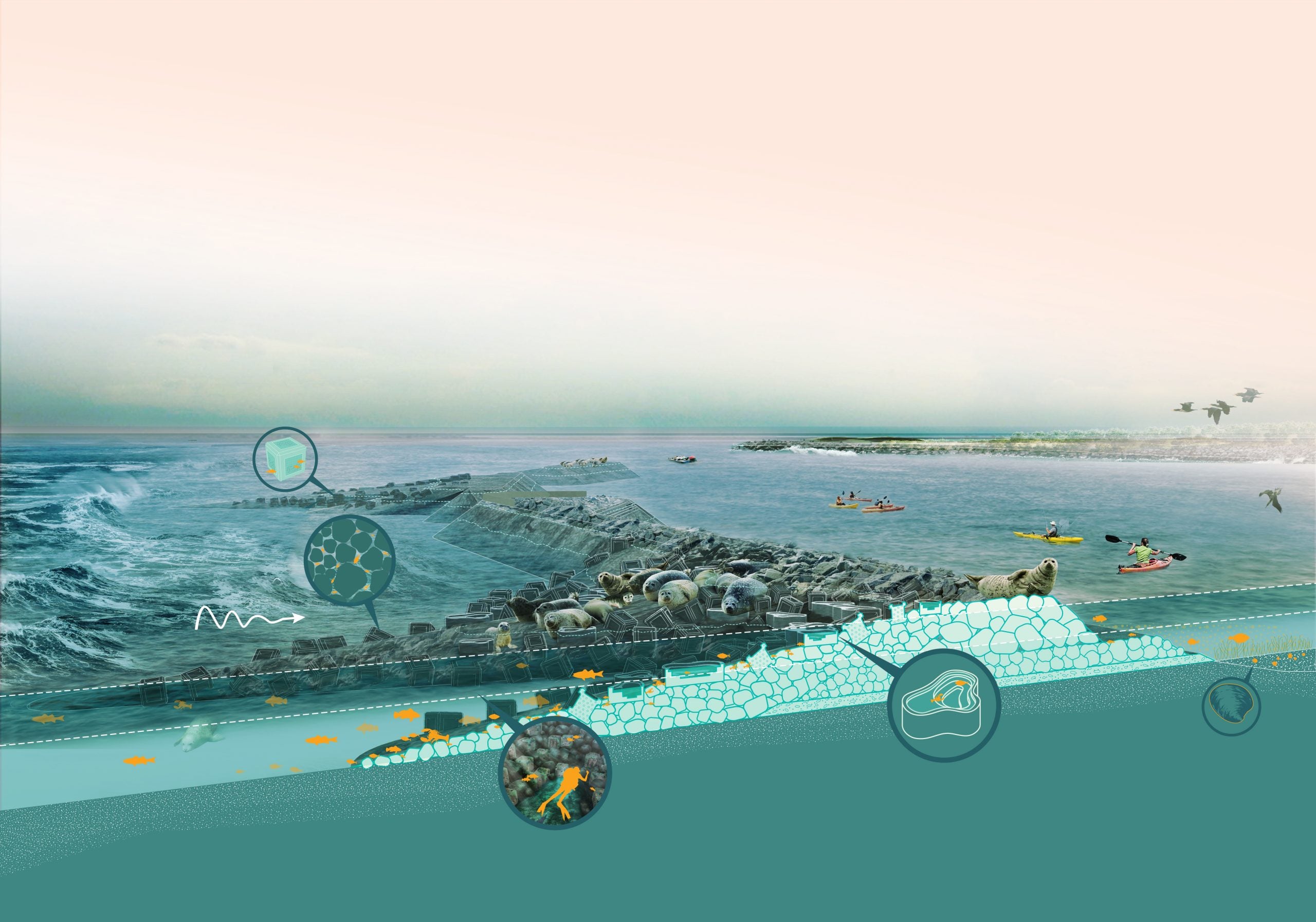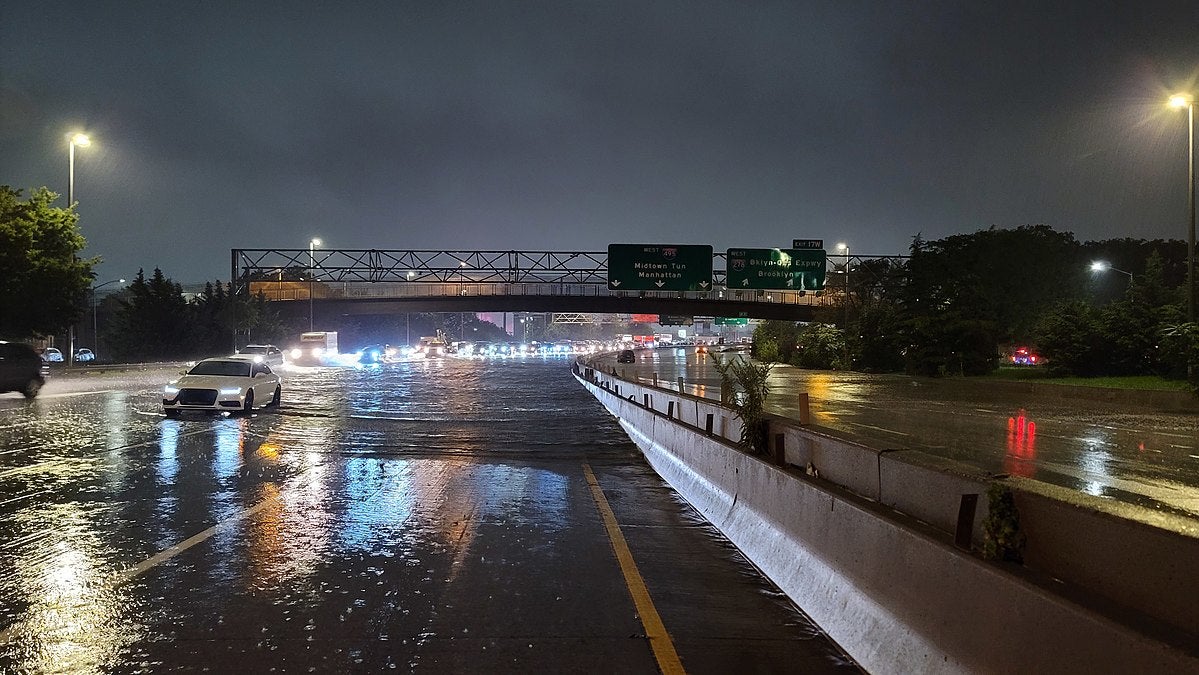Hurricane Ida made landfall in Louisiana, bringing a path of destruction to many of the state’s coastal communities.
As the storm moved northeast, Ida brought record rainfall, to many states, including New York and New Jersey where devastating floods caused loss of life and millions in damages. The region has not experienced a storm on this scale since Superstorm Sandy in 2012.
And climate change is increasing flood risk with rainfall.
According to the Fourth National Climate Assessment, the heaviest rains in the Northeast already produce 55% more rain compared to the 1950s and could increase another 40% by 2100.
As the region begins recovery efforts, here are three actions that New York and New Jersey leaders can take to reduce climate-fueled flood risk.
1. Establish sustained state investments in resilient and natural infrastructure.
Hurricane Ida shattered rainfall records across the region —dropping 3.1 inches of rain in just one hour, and the National Weather Service declared a flash flood emergency in northern New Jersey and New York City for the first time ever. According to New York Gov. Kathy Hochul, the storm damaged 1,200 homes and caused $50 million in damage.
Across New Jersey, Ida caused at least 57,519 power outages statewide, and in Jersey City alone, an estimated $35 million in damage.
To build comprehensive flood resilience, both states must establish long-term funding sources to update infrastructure designed to accommodate current and future extremes. Prioritizing investments that protect and restore natural systems can offer multiple benefits improving air and water quality, reducing urban heat and sequestering carbon.
In New York, a forthcoming Environmental Bond Act ballot measure would establish $3 billion in funding for environmental and resilience projects and support 65,000 good-paying jobs.
New York and New Jersey can also take advantage of funds through the federal STORM Act, which authorizes millions of dollars to capitalize state resilience revolving loan programs.
President Biden recently approved major disaster designations for eleven counties in New Jersey and six counties in New York. This will allow local governments to access much-needed federal disaster recovery resources. Increased allocations to FEMA’s Building Resilient Infrastructure and Communities grant program and resilience inclusions in Biden’s proposed infrastructure bill can also help reduce risk.
2. Advance proactive coastal resilience plans.
New Jersey has committed to developing and implementing its Climate Change Resilience Strategy, which will provide a coordinated, science-based approach for advancing resilience projects across the state. State leaders must commit the resources needed to advance this strategy effectively and incorporate extreme rainfall projections into planning.
The completion and implementation of the state’s Climate Resilience Strategy will provide the coordination, direction and accountability needed to ensure New Jersey is prepared for flood risks.
In New York, building upon the state’s historic Community Resiliency and Risk Act of 2014, leaders should similarly pursue a statewide plan and updated guidance for land use regulation.

A cross section view of Living Breakwaters, a natural infrastructure project in Staten Island, NY. Photo Courtesy of Scape Studios.
3. Advance regional strategies with federal support before the next disaster.
States and federal policymakers must plan for long-term risks together, particularly as water does not recognize geographic boundaries between states. One vehicle for coordinated planning is the U.S. Army Corps of Engineers New York-New Jersey Harbor and Tributaries Study through which, if the study is restarted, the states could take a larger role in identifying strategies that address multiple flood threats.
Hurricane Ida was a wake-up call that our climate crisis is here, and leaders at all levels of government must work urgently to help communities adapt and build resilience to extreme weather.
By establishing sustained investments in natural infrastructure, introducing proactive, coordinated and science-based climate resilience plans, and fortifying timely federal support, New York and New Jersey can reduce flood risk before the next disaster.
Communities on the ground need support in their recovery from the impacts of Hurricane Ida. Learn how you can support or get support from these efforts here:
Louisiana resources:
- Louisiana needs your help, now more than ever (multiple resources)
New Jersey resources:
- Help NJ Now (donations, emergency services and volunteering)
- New Jersey Volunteer Organizations Active in Disaster
New York resources:
- New York City Emergency Management (emergency services)
- Help Now NYC (volunteering)
- NYC Volunteer Organizations Active in Disaster (donations, volunteering)










